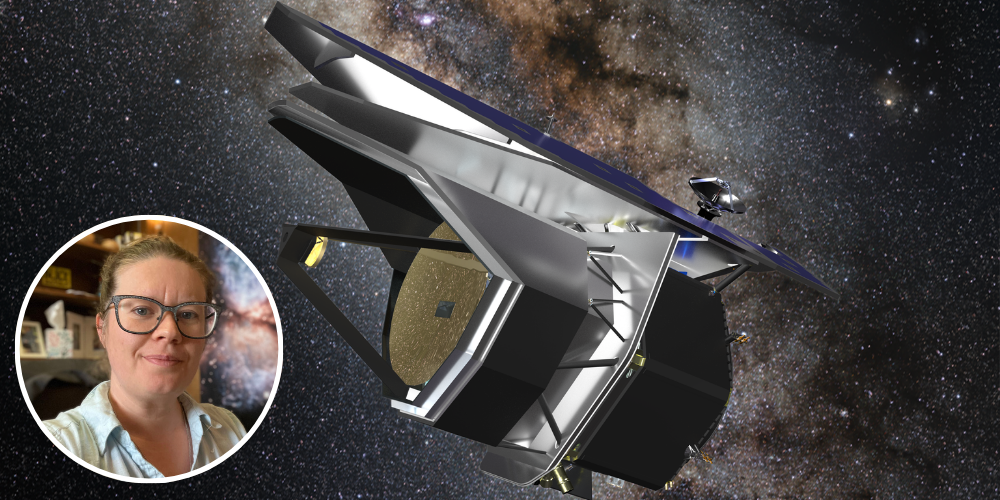KU astronomer on space probe team that advances to next round of $1B NASA mission selection

LAWRENCE — On Oct. 3, NASA announced that a space probe proposed by a University of Kansas astronomer has advanced to the next round of consideration for a $1 billion mission slated to launch into orbit in the 2030s.
PRobe far-Infrared Mission for Astrophysics (PRIMA) is one of two probe concepts selected by NASA for further study over the next year. Elisabeth Mills, KU assistant professor of astronomy, is a co-investigator of this international team led by NASA Goddard Space Flight Center researcher Jason Glenn as principal investigator.
This announcement follows NASA’s creation of a new class of astrophysics observatories, called probes, designed to tackle big questions in astrophysics on decade time scales. NASA plans to select either a far-infrared or X-ray observatory to investigate the birth of planets, as well as the evolution of galaxies and black holes, in the early universe.
Over the next year, teams will receive NASA funding to flesh out their plans and prototypes even further. Mills' team will receive $5 million for Phase A, which takes place over the next year. NASA will then re-review the proposals and select one mission to move forward.
KU's PRIMA is designed to pick up on far-infrared radiation, a type of light that can only be detected from space. The Herschel Space Observatory, which was operational from 2009 to 2013, was the last space observatory capable of detecting these longer wavelengths.
“This is one of the most uncharted regions of the electromagnetic spectrum,” Mills said. “Lots of big questions in astronomy are just waiting for observations that can only be done at these wavelengths.”
One of these big questions researchers hope to answer with PRIMA is the origins of solar systems like our own. They plan to analyze planetary building blocks called protoplanetary disks to determine how much water is needed for different types of planets to form. Doing so could uncover where Earth’s water came from, a mystery that has not been definitively solved.
“Far-infrared wavelengths are the key to measuring the total amount of water available to planets like Earth when they were young,” Mills said. “No other wavelengths of light let us do this — to understand how early solar systems can assemble and deliver oceans' worth of water to planets.”
PRIMA’s cutting-edge technologies are poised to enable plenty of new discoveries. Like the James Webb Space Telescope, PRIMA’s telescope would be cryogenically cooled to reduce infrared background noise, but it will reach even colder temperatures — about 4.5 K, or -450 degrees Fahrenheit — to improve the instrument’s sensitivity.
PRIMA would also be outfitted with a wide-field camera, a high-resolution spectrograph to study the chemical composition of cosmic objects and state-of-the-art kinetic inductance detectors developed by NASA’s Jet Propulsion Laboratory in collaboration with Goddard to measure far-infrared radiation.
Glenn said that he and his colleagues are excited to see what comes next for PRIMA.
“The PRIMA team is excited and grateful for this opportunity to develop a concept for the first NASA Astrophysics Probe Explorer,” Glenn said. “Our extraordinary team of scientists and engineers is going to enable humankind to understand how black holes and galaxies evolved together and how planets got their atmospheres."
Mills added that PRIMA would be a treasure trove for science if it is ultimately selected to become the next probe mission. “PRIMA would provide a decade of access to wavelengths we haven’t been able to observe for years. The technological leaps from its instruments would give us a whole new view of the sky, going deeper than ever to make stunning images that change the way we look at the universe around us.”
The College is the heart of KU, educating the most students, producing the most research and collaborating with nearly every entity at KU. The College is home to more than 50 departments, programs and centers, as well as the School of the Arts and School of Public Affairs & Administration.